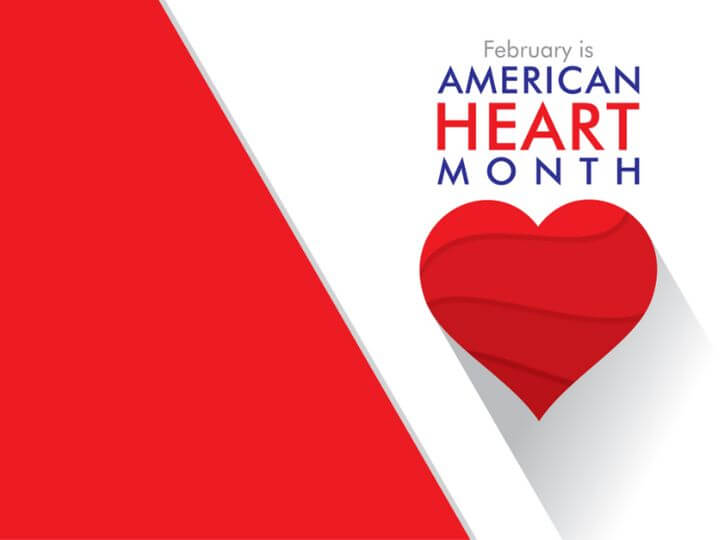February marks American Heart Month, making it the perfect time to prioritize heart health and employee wellness. With heart disease remaining the leading cause of death in the United States, affecting over 126 million adults, companies have a vested interest in encouraging healthy lifestyles, managing healthcare costs, and building an ethical culture centered on employee wellbeing.
This article discusses key reasons for focusing on heart health this month, strategies to promote employee wellness, and sustaining momentum year-round. Let’s dive in to learn, with the expertise of Discover Health Advocacy, on how protecting your people’s health also protects your bottom line.
Key Reasons for Focusing on Heart Health This February
Promoting heart health and employee wellness provides multifaceted benefits extending beyond individual well-being. Here are the top reasons your company needs to double down on addressing heart disease risk among your workforce this month.
The Rising Threat of Heart Disease
Heart disease accounts for 1 in 4 deaths in America annually. Shockingly, someone suffers a heart attack every 40 seconds. The prevalence of the condition continues rising rapidly:
- Cardiovascular disease affects 48% of all adults in the US currently, projected to rise to over 130 million in 2035 based on trends.
- Annual direct medical costs of cardiovascular disease will triple from $396 billion to over $1.1 trillion between 2022 and 2035.
- Heart disease death rates have increased across three-fourths of US counties between 2018 and 2021, bucking decades of prior decline.
Rampant risk factors like inactivity, stress, obesity, diabetes, poor nutrition, and high blood pressure drive this explosion. As the workforce ages, action today determines outcomes tomorrow.
Linking Employee Wellness and Productivity
When employees feel energized and motivated by an investment in their health, performance and dedication undoubtedly improve. However, inadequate wellness programs have the opposite effect:
- Over a quarter of employees state health issues like obesity, high BP, and high cholesterol reduce their productivity.
- Workers with chronic diseases miss 68 million additional workdays annually beyond their healthy counterparts.
- Absenteeism costs from preventable conditions exceed $2,000 per employee per year —over $225 billion total annual cost.
Conversely, a 10% improvement in health metrics boosts productivity by over 8%. Investing in wellness brings game-changing returns.
Managing Healthcare Costs
With employers covering most health insurance costs in addition to productivity losses from poor health, investment in wellness drives significant savings:
- About 75% of the nation’s healthcare spending tackles preventable chronic illness.
- Companies can save over $3.00 and sometimes up to $6.00 in healthcare costs and absenteeism for every $1.00 spent on employee wellness programs.
- Employers who support exercise, nutrition, and stress management realize 28% lower medical costs, 26% less absenteeism, and self-reported 30% higher productivity.
Promoting healthy lifestyles this February can directly enhance your bottom line.
Building an Ethical, Employee-Centric Culture
While cost control does matter, employee health is about more than dollars and cents. The commitment to their holistic well-being you demonstrate through prioritizing heart health this month speaks volumes:
- Over 80% of employees state wellness programs make them feel more positive about their employer. They see it as proactive support for their best interests.
- 73% would recommend an employer with strong benefits/wellness versus just 39% for those lacking such investment. Your external reputation similarly benefits.
- A culture truly caring for employees as humans beyond profit machines attracts 14% more job applications and cut voluntary turnover up to a colossal 87%.
Make heart health central for both financial and cultural uplift this month.
Strategies to Promote Heart Health This Month
This February presents a timely opportunity to execute targeted campaigns improving heart health literacy, encouraging lifestyle changes, and detecting risk early.
Here are impactful ideas to support employee wellness right now:
Hosting Educational Workshops
Awareness drives action. Use Heart Health Month to organize expert-led workshops to get your people up to speed on protecting themselves. Workshop best practices include:
- Collaborating with local hospitals and clinics to provide specialist speakers on heart health. Or, bring qualified in-house nurses or nutritionists to the stage.
- Promoting workshops heavily beforehand with posters, emails, intranet posts etc. Consider tying them into larger February wellness campaigns.
- Offering a range of practical, engaging sessions like:
- Heart health 101 – conditions, lifestyle diseases, and risk overview
- Nutrition for heart health – meal planning and food demos
- Managing blood pressure
- Coping with stress
- Smoking cessation plans
- Heart-pumping exercise routines
- Recording/documenting talks allowing asynchronous learning for remote staff or those unable to attend live.
Well-executed educational workshops give your workforce actionable knowledge to safeguard their tickers.
Launching Health Challenges

Once employees grasp health factors jeopardizing their heart, encourage positive habits through workplace challenges this February.
Consider team or individual competitions across areas like:
- Exercise – weekly step count contests via trackers, gym check-in leaderboards, etc.
- Heart-healthy eating – departments compete for most veggie meals or water consumption
- Weight loss – biggest losers or % of body weight reductions
- Smoking cessation – teams support quitters in a tobacco termination challenge
- Stress management – guided meditation or yoga minutes
- Blood pressure monitoring – rewarded home tracking
Sweeten participation with gift card rewards or extra PTO to motivate the masses. Challenges beat poor health one step at a time while forming accountability networks advocating heart wellness year-round.
Offering Health Screenings
Too few employees receive regular health check-ups from their physician. Offer onsite screenings this month checking vital risk factors like:
- Blood pressure
- BMI
- Heart rate
- Blood glucose
- Cholesterol profile
Ideally, provide individual consultations explaining results and next health steps to turn screenings into tailored action plans. Early detection allows for managing issues before catastrophe strikes.
Consider subsidizing screenings, partnering with local clinics, or having full-time nurses/physicians arrange them regularly beyond February. Make caring about employee health the norm, not the exception.
Creating Heart-Healthy Environments
While personal lifestyle choices and screenings matter greatly, environment also influences outcomes significantly. Use February to overhaul workplace policies and spaces facilitating heart wellness. Strategies include:
- Healthy onsite eateries with nutritious grab-and-go snacks or subsidized healthy options in the cafeteria.
- Ergonomic spaces reducing stress and risk of high blood pressure via stand-up desks, monitors at eye level, quality chairs, and clutter control.
- Physical activity incentives like walking trails, onsite gyms, standing/treadmill desks, or outdoor break areas. Consider paid time for exercise too.
- Smoke-free campuses support smoking cessation alongside gradual quitting programs.
- Onsite healthcare services offering blood pressure checks, health consultations, and testing/screening coordination.
When surroundings endorse heart health rather than hinder it, sustainable change occurs.
Supporting Heart Disease Research
Look beyond immediate employee wellness this month by actively supporting scientific efforts to solve cardiovascular conditions long-term. Options include:
- Hosting health fairs or fun runs benefiting leading heart disease research non-profits. This engages staff while funding breakthroughs.
- Participating in clinical trials for cardiology drugs or treatments. Allow employees to enroll during work hours.
- Encouraging blood/plasma donations if researchers targeting heart disease request assistance. Offer paid time off for recurring donations.
- Advocating local heart health policies like smoking bans, health education, greener transportation infrastructure, etc.
Though indirect, enabling cutting-edge research and public health reforms ultimately provides a world with less prevalent and devastating heart illness – improving future life on and off the job.
Sustaining Momentum Year-Round
Avoid relegating heart health to a once-a-year campaign. Use February as a springboard for permanent transformation by baking employee wellness into company culture.
Building Robust Wellness Programs
Short-lived interventions fail. Establish a “Comprehensive Workplace Health Promotion program” interweaving:
- Senior-level sponsorship with dedicated wellness leaders
- Integration into company fabric via roles, responsibilities, and infused policies
- Ongoing participation incentives making engagement irresistible
- A wide variety of interventions tackling nutrition, activity, awareness, prevention, screening, disease management, mental health, ergonomics, and beyond
- Rigorous evaluation pinpointing refinements for maximum impact
The CDC finds such strategic programs generate $3-$15 ROI per $1 spent via sharply lower medical/insurance fees and productivity lifts.
Yet their biggest boon is the genuine culture of caring for employee welfare as family that naturally follows.
Promoting Healthy Lifestyles Daily
Annual check-ups and the occasional 5k fail to shift lifestyles. Embrace daily nudges cementing heart wellness habits, like:
- Health tips on intranet and internal communications/posters. For example, share complication warnings to awaken urgency.
- Support groups on workplace chat apps where colleagues exchange diet tricks, workout routines, etc.
- Relaxation spaces for destressing or midday recharge.
- Subsidized activity trackers making fitness fun rather than a financial burden. Consider inter-team step count challenges!
- Healthy office perks like onsite gyms, standing desks, and ergonomic equipment.
- Policies enforcing breaks so people move while preventing burnout.
Daily exposure to wellness multiplies inspiration for employees to stay on track.
Developing Supportive Cultures
Wellness demands social backing, making cultural reform equally vital. Boost camaraderie through:
- Workplace friendships via team building days, social events, retreats, etc. Strong ties motivate health accountability.
- Work-life balance policies like remote work, unlimited time off, and banning after-hours work communications. Burnt-out bodies break down.
- Leader participation in programs like challenges or health talks. Monkey see, monkey do!
With the workforce feeling like family beyond mere colleagues, individuals make lifestyle changes benefiting personal and collective well-being.
FAQs
Here are answers to common questions businesses have around prioritizing heart health and wellness:
How much do poor health and heart disease cost companies annually?
Absenteeism and medical expenses from preventable illness sap over $500 billion yearly from corporate bottom lines – averaging around 2,000 per affected employee.
What are some quick wellness policy changes we can make this month?
Some easily implementable tweaks driving big impact include offering healthy snacks in vending machines, banning workplace smoking, introducing standing desk options, encouraging walking meetings, or subsidizing step trackers.
What resources does your organization provide for building wellness campaigns?
Discover Health Advocacy partners with companies to conduct employee health assessments identifying risk factors, creates customized education and intervention roadmaps, provides campaign management from creation to analysis, delivers expert speakers and workshop facilitators, and more. Get in touch to learn about our corporate wellness solutions.
How can we assess the ROI and impact of our wellness initiatives?
Robust pre/post campaign data analysis around medical claims, prescription spend, productivity, absenteeism, healthcare feedback surveys etc. quantifies financial and cultural returns. Our team helps companies measure wellness programs effectively.
What kinds of experts would you recommend for educational workshops?
Ideal speakers include cardiologists, nutritionists, exercise specialists, mental health practitioners, and certified health educators. We connect clients with the perfect subject matter experts to deliver engaging, impactful workshops on any wellness topic.
Conclusion
This Heart Health Month represents the perfect opportunity to transform your company into one that encourages healthy lifestyles year-round while managing healthcare costs. Don’t leave money and loyalty on the table due to heart disease risk among employees. Contact Discover Health Advocacy today to build science-backed wellness campaigns maximizing both fiscal and cultural growth. Our team can’t wait to partner with you in protecting your greatest asset – your people.


